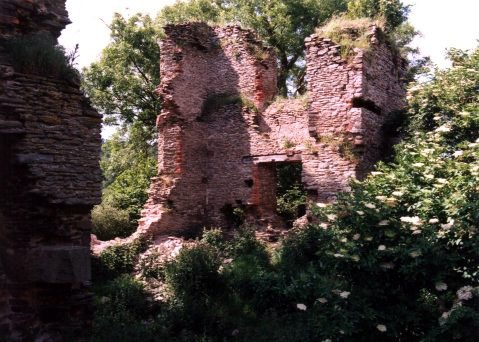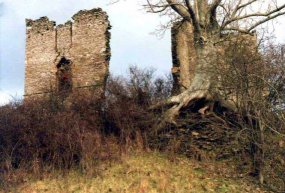Stapleton
Stapleton castle was most likely built by either Hugh Fitz Osbern or his son, Osbern Fitz Hugh during the anarchy of King Stephen's reign. In 1143 Roger Port of Kington castle acquired the fortress of Presteigne which pertained the barony of Burford or Richards Castle as it was otherwise known. In reply either Hugh or Osbern built Stapleton castle which was in effect the siege castle of nearby Presteigne. However the lords of Richards Castle failed to retake Presteigne and the Stapleton castle became the caput of their barony in the west.

Stapleton castle then passed through Hugh and Matilda's daughter Margaret to the Cornwalls, illegitimate descendants of Earl Richard Plantagenet of Cornwall (d.1272), the second son of King John. In 1415 their descendant John Cornwall fought with distinction at Agincourt and for many years afterwards the walls of the fortress were festooned with the armour Sir John looted from the fallen French. In 1643 Sir Michael Woodhouse found Stapleton castle was not strong enough to be properly defending and fearing that the nearby Parliamentarians at Hopton and Brampton Bryan castles might put a garrison in the place had it 'defaced'. So ended the life of another ancient castle.

The castle is private property and potential visitors should contact the owner, Trevor Griffiths at Stapleton Castle Court, Stapleton, Presteigne, Powys, LD8 2LS.
The Nine Castles of Burford Barony, 1048 to 1308 (ISBN 1-899376-39-9) [1999] continues the history of Richards Castle from 1219 to 1308 and then looks at the other castles appurtenant to the barony, viz, Byton motte and bailey, Combe ringwork and bailey, the pathetic Discoed 'motte', Homme motte, Presteigne motte and bailey, Rochford motte, Stanage motte and bailey, Stapleton castle and Burford/Tenbury Wells motte and bailey. The history of these sites and their owning families are examined as well as the castle remains.
Available for £9.95 through the PayPal basket below.